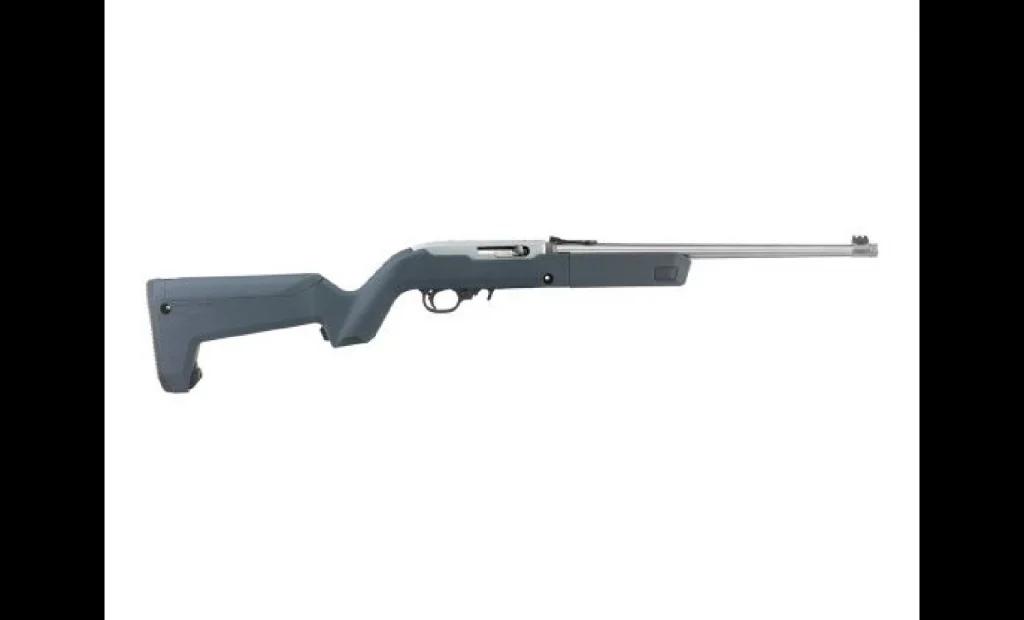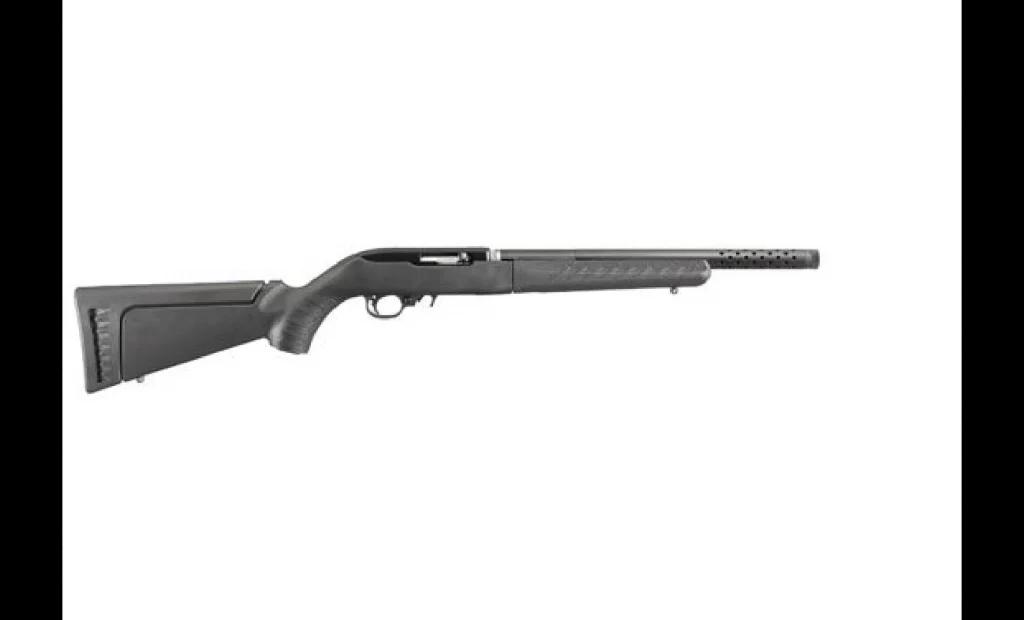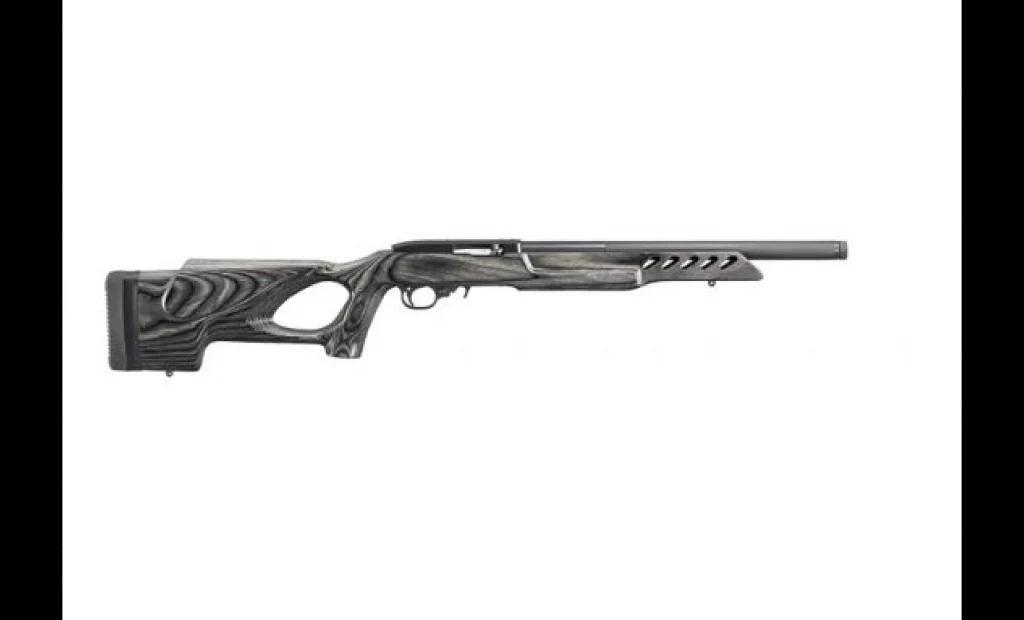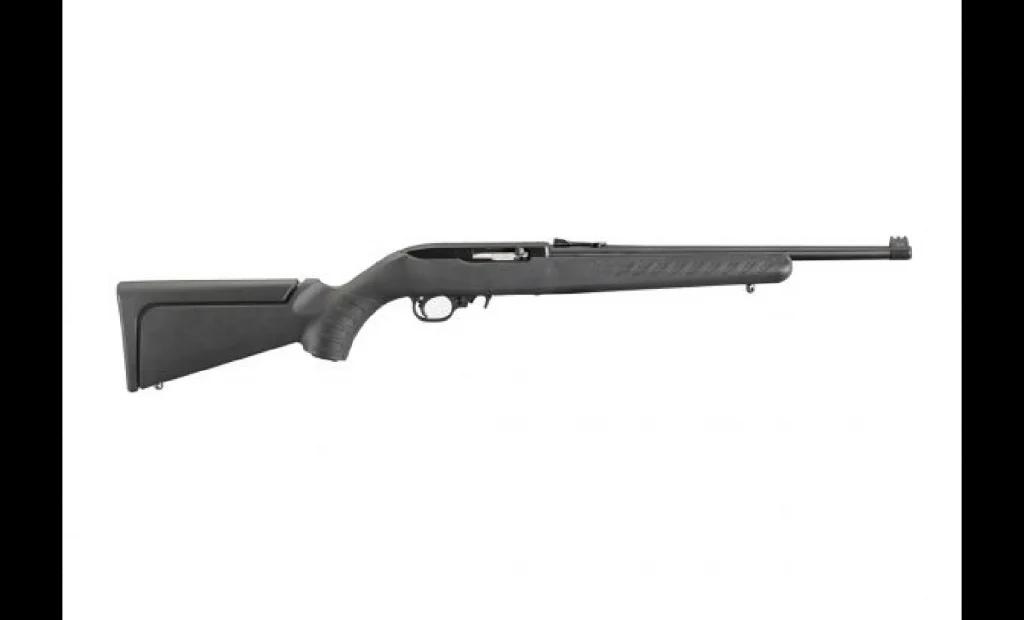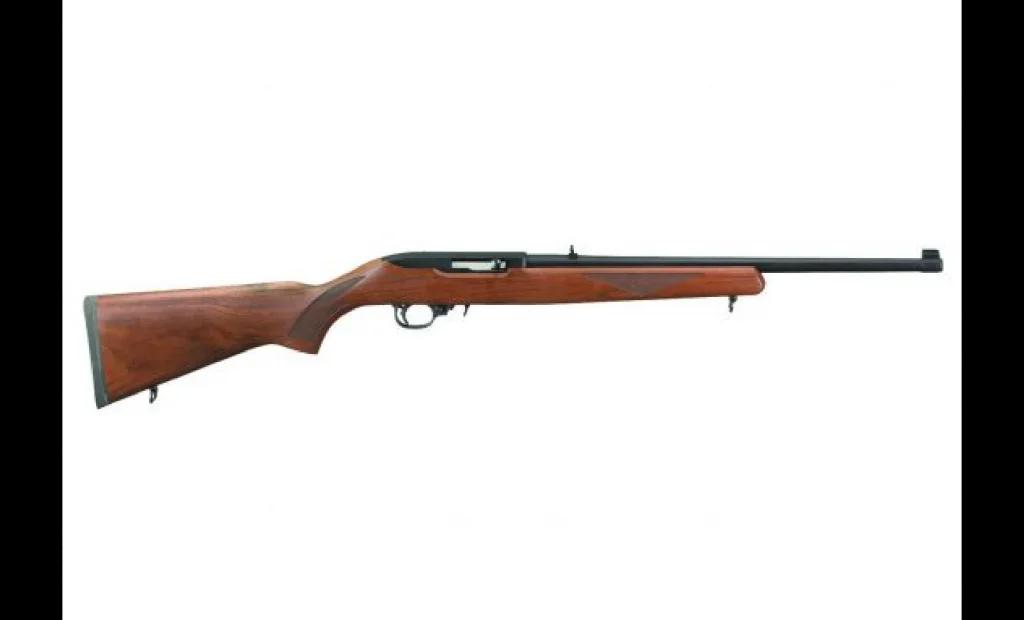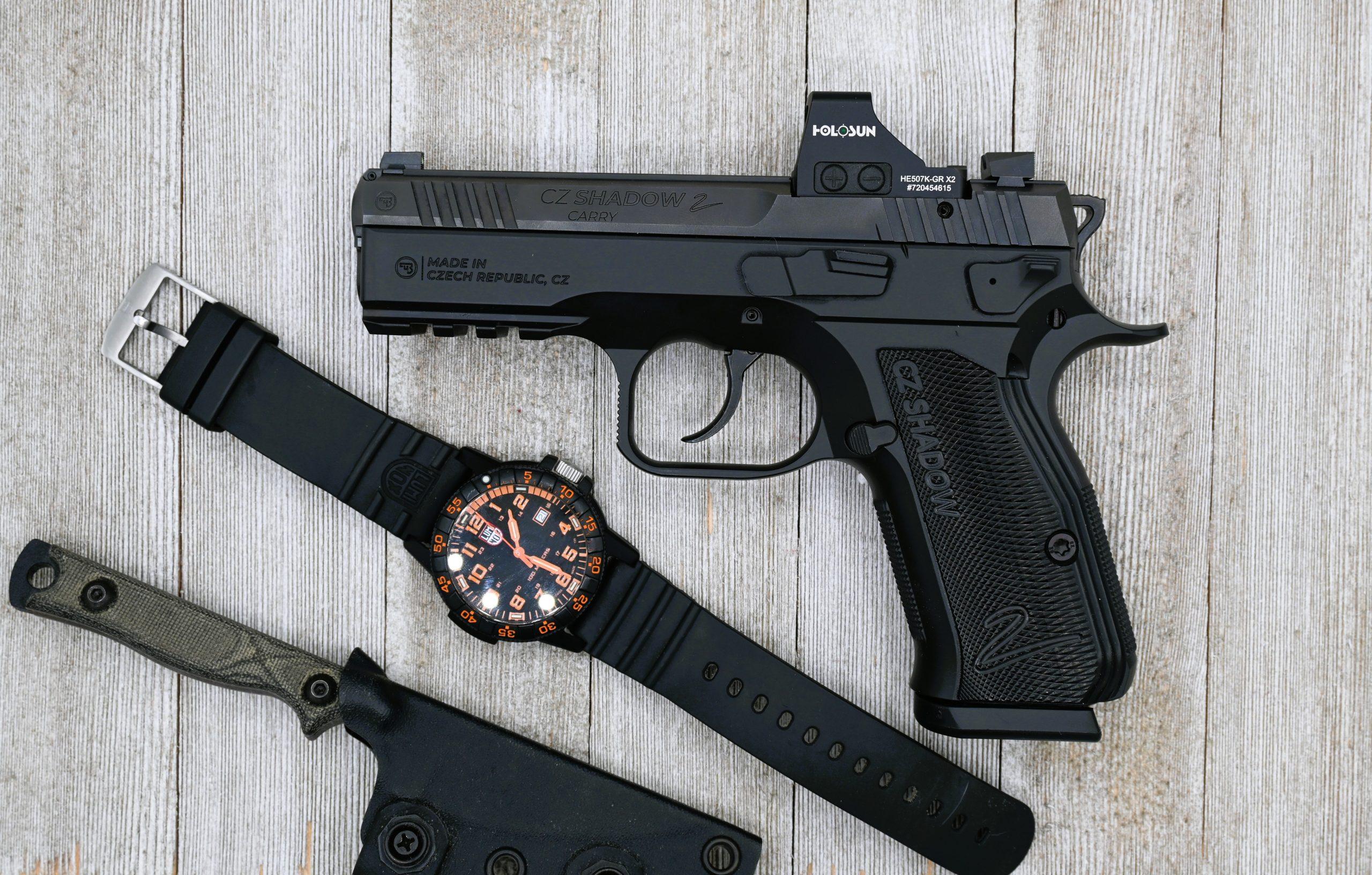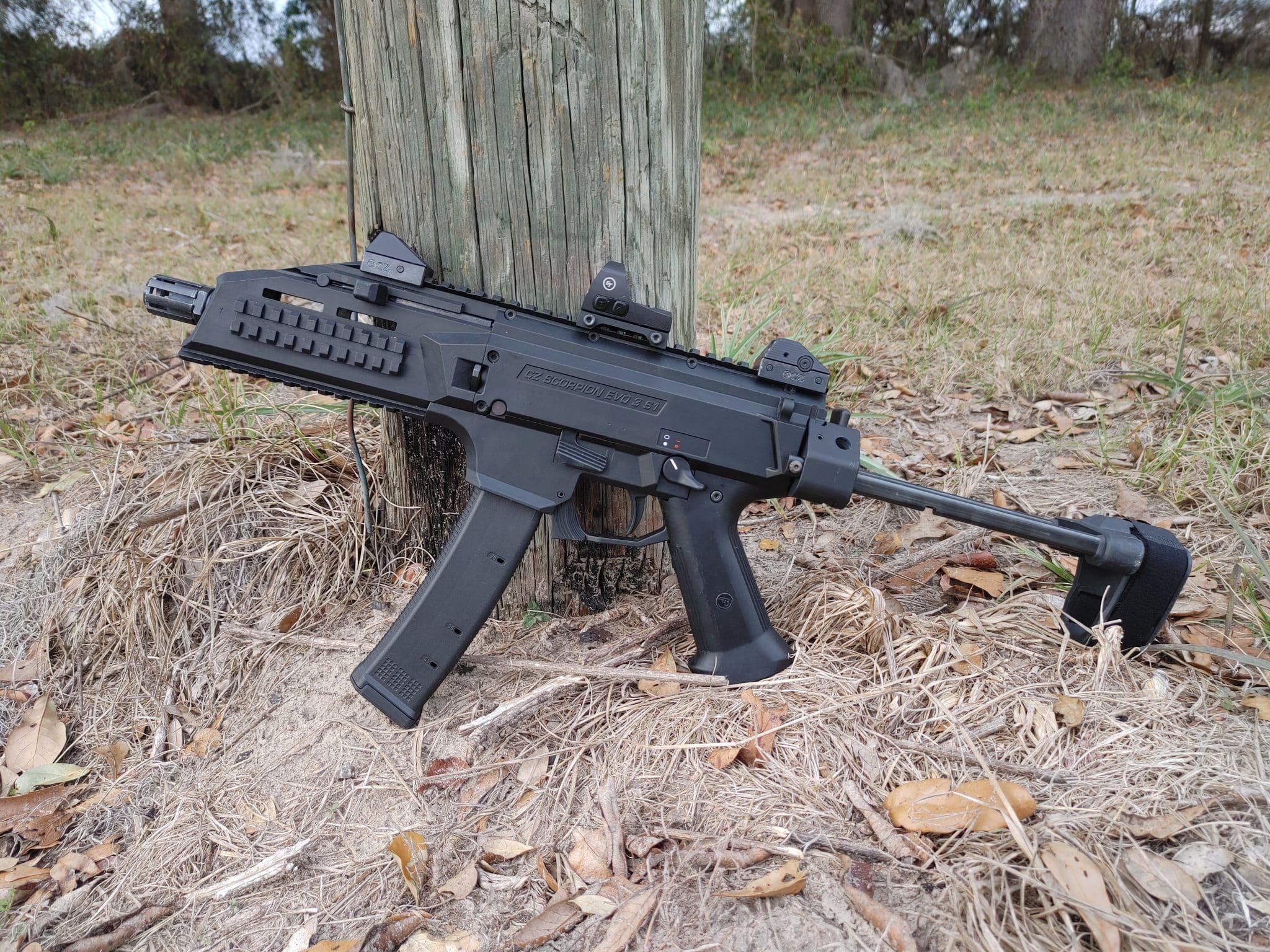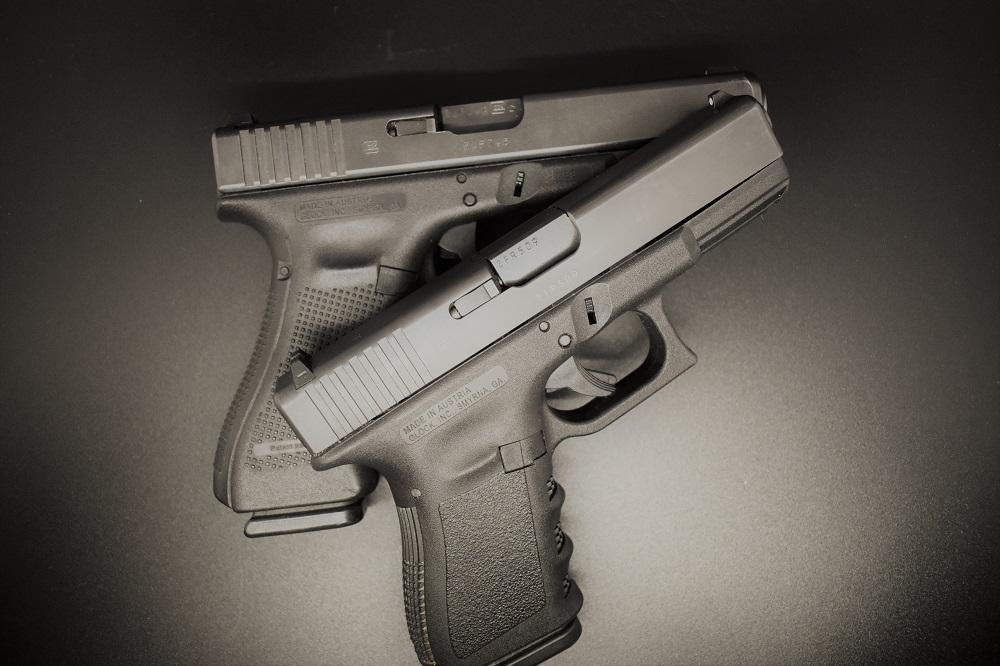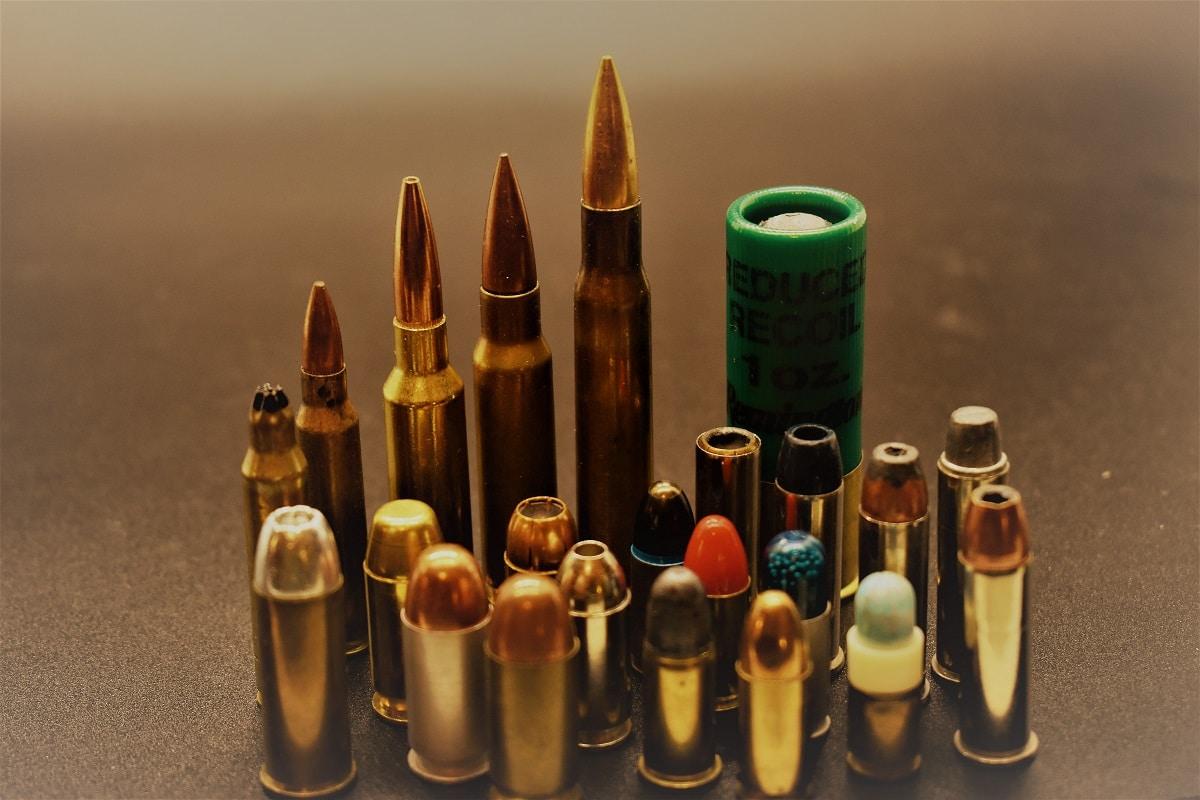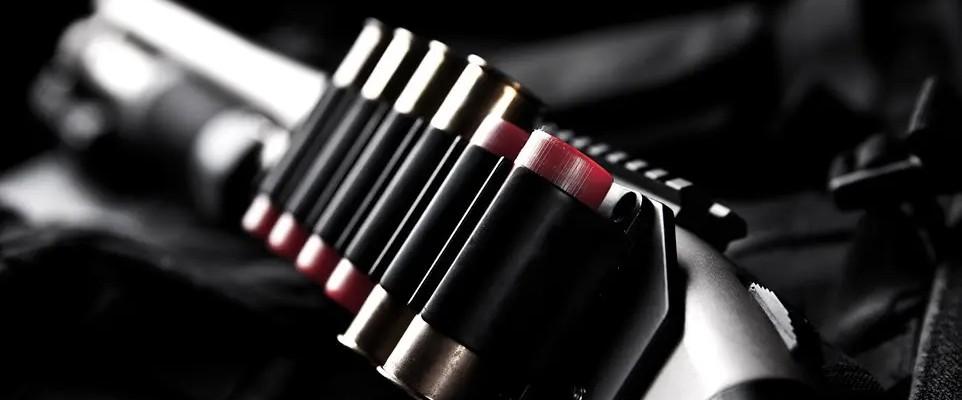A Guide To The Ruger 10/22
Written By
Megan Kriss
Expert Contributor
Edited By
Michael Crites
Licensed Concealed Carry Holder
Share:
Products are selected by our editors. We may earn a commission on purchases from a link. How we select gear.

Updated
Jan 2023
The Ruger 10/22 is an iconic and beloved rimfire rifle — easily one of the most popular on the market today. It’s affordable, reliable, and customizable to an unbelievable extent so that any Ruger 10/22 can become something truly and uniquely yours.
Today, we’re going to take a deep dive into this classic rifle, from the best models and variants on the market (out of the seemingly infinite number of different models out there) to some noteworthy accessories and upgrades that can make the 10/22 something truly special.
Let’s start with the basics, and then we’ll get into which particular models of 10/22 we think are most worth your time and consideration.
In This Article
Why You Should Listen To Us
If I had to pick one gun in all the world to call my favorite, it just might be the Ruger 10/22. If you’re a firearm enthusiast like myself, you know how much that means.
I grew up learning to shoot on a 10/22, but my affection for this rifle platform isn’t just nostalgia. To this day, it’s probably the gun I shoot the most. It’s a fun, easy gun to use and it’s dirt cheap to feed it.
Though the 10/22 Carbine is probably my most frequently shot, I’ve used a number of different 10/22s over my years of shooting. I’m even planning a from-scratch 10/22 build at this very moment.
All that is to say, I love the 10/22 and have used it extensively, so you can trust that I know what I’m talking about here.
Our Favorite 10/22 Models
1. Ruger 10/22 Carbine 1103
This Ruger 10/22 Carbine model is the base model of 10/22. Some might call it basic, but I prefer “standard.” In short, it’s the design that all other 10/22s are based on, just each with its own twists.
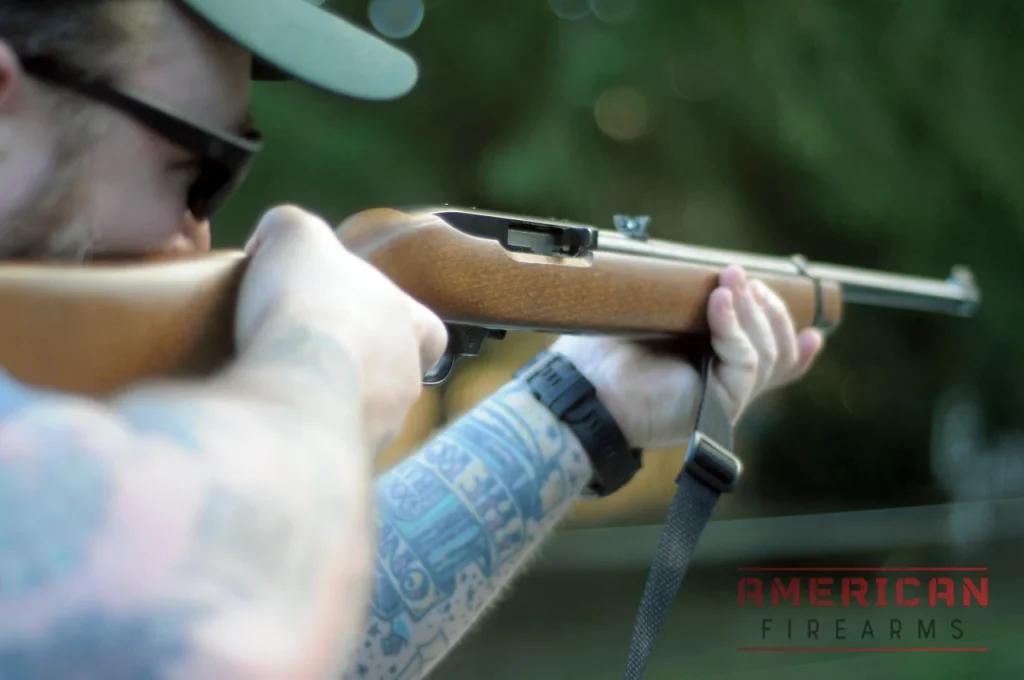
This one has a hardwood stock and an alloy steel barrel and receiver, each with a satin black finish. It also features a gold bead front sight with an adjustable rear sight.
Overall, the 10/22 Carbine 1103 is a simple but effective rifle that very much has the look and feel of a classic bolt action in a semi-automatic package.
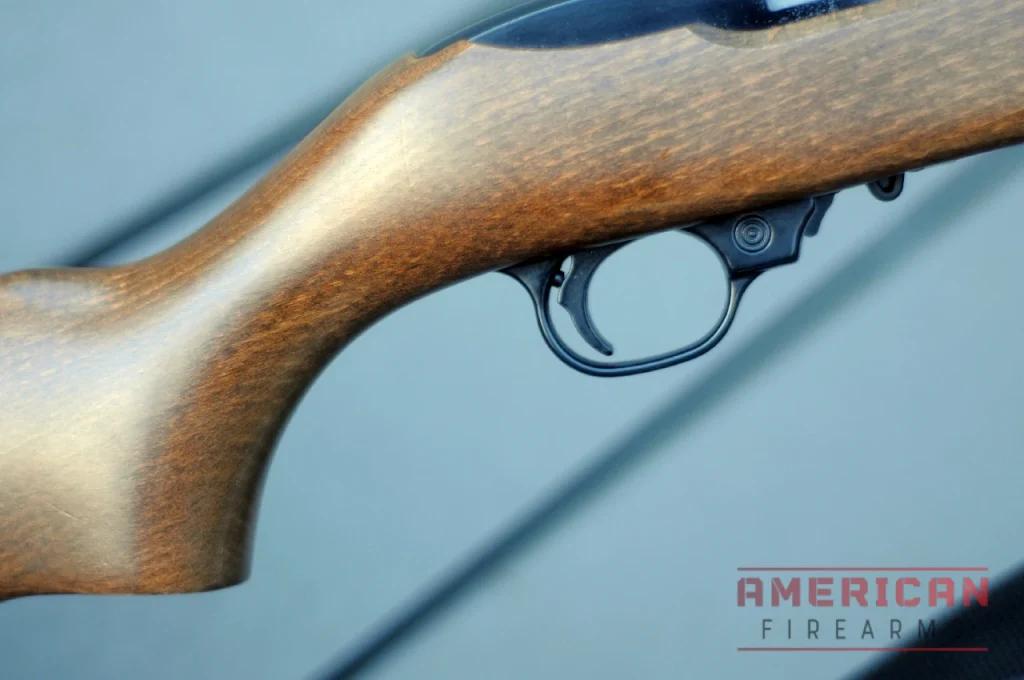
The all-wood body adds weight, which really squelches recoil and makes keeping the Carbine on target incredibly easy. Even with irons knocking 9/10 on an 8-inch plate from 100 yards is an all-day affair.

Specs:
- Overall Length: 37”
- Barrel Length: 18.5”
- Weight: 5 lb.
- Rifling Twist Rate: 1:16” RH
- Threaded Barrel: No
- Magazine Size: 10
- Left-Handed Models: No
- MSRP: $379
2. Ruger 10/22 Carbine 31143
The 10/22 Carbine 31143 is about as different from the 1103 as you can get while still remaining at 10/22 Carbine. That is to say, not that different.
The main difference is the black synthetic stock, which leads to significant weight savings. It also comes with a factory-mounted Viridian® EON 3-9×40 scope and a Ruger-branded hard case, which the 1103 does not.
With the scope, it’s heavier than the original 10/22 Carbine, but the rifle alone weighs just 4.4 lb., a little over half a pound less than the original. Other than that, this is pretty much the same as the other Carbine models.
Specs:
- Overall Length: 37”
- Barrel Length: 18.5”
- Weight: 5.4 lb.
- Rifling Twist Rate: 1:16” RH
- Threaded Barrel: No
- Magazine Size: 10
- Left-Handed Models: No
- MSRP: $439
3. Ruger 10/22 Takedown 11100
Like the 10/22 Carbine 1103 is the original 10/22 Carbine, the Takedown 11100 is the original 10/22 Takedown model.
Basically the same as the Carbine in a takedown rifle with a black synthetic stock and a stainless steel barrel and receiver with a clear matte finish.

But it does the takedown thing really well. Disassembly is very easy. All you have to do is lock the bolt back, ensure that the rifle is unloaded, push the takedown lever, then twist and pull the two pieces apart.
Reassembly is similarly easy and returns the rifle to zero, even with receiver-mounted optics.
Specs:
- Overall Length: 37”
- Barrel Length: 18.5”
- Weight: 4.6 lb.
- Rifling Twist Rate: 1:16” RH
- Threaded Barrel: No
- Magazine Size: 10
- Left-Handed Models: No
- MSRP: $539
4. Ruger 10/22 Takedown 31152
This 10/22 Takedown variant mixes things up a little bit, especially compared to the last one.
The main difference is the Magpul X-22 Backpacker stock.
This is a really cool stock that actually locks into itself for convenient transportation when the rifle is disassembled. It also has a storage compartment in the grip, plus another storage compartment in the stock that stores up to three 10-round magazines (and the rifle ships with four mags).
The stock also has a MOE SL non-slip rubber buttpad, an ergonomic handguard, and the option to mount QD slings.
Other standout features include the fiber optic sights and 16.4-inch stainless steel threaded barrel with a satin finish.
Thanks to the Backpacker stock and the shorter barrel, the Takedown 31152 is even lighter than the original Takedown.
Specs:
- Overall Length: 35”
- Barrel Length: 16.4”
- Weight: 4.2 lb.
- Rifling Twist Rate: 1:16” RH
- Threaded Barrel: Yes
- Magazine Size: 10
- Left Handed Models: No
- MSRP: $659
5. Ruger 10/22 Takedown Lite 21152
The 10/22 Takedown Lite isn’t that much lighter than the Takedown 11100 (and it’s heavier than the 31152), but it is smaller, with a 16.12 inch barrel and an overall length of 34.62 inches.
Other than that, one of the main distinguishing features of the Takedown Lite is the Ruger Modular Stock System. It comes with a low comb, standard length of pull stock module, but also ships with a high comb, standard length of pull stock module. Other modules can be purchased separately.
The other major distinguishing feature is the aluminum alloy barrel sleeve. It has a threaded muzzle so it’s compatible with various muzzle devices and comes with a cap to protect the threads.
The Takedown Lite doesn’t come with sights, so you’ll need to add your own sights or optic.
Specs:
- Overall Length: 34.62”
- Barrel Length: 16.12”
- Weight: 4.5 lb.
- Rifling Twist Rate: 1:16” RH
- Threaded Barrel: Yes
- Magazine Size: 10
- Left Handed Models: No
- MSRP: $809
6. Ruger 10/22 Target 21186
The Ruger 10/22 Target is, as you can probably guess, designed specifically for target shooting.
Part of that is the upgraded trigger. Rather than the standard 10/22 trigger, the Target uses Ruger’s BX-Trigger, a crips trigger with an adjustable pull weight between 2.5 and 3 pounds.
In addition, it has a black wood grain laminate stock with a thumbhole, adjutable length of pull, and a black recoil pad.
The 16.13-inch alloy steel barrel is tension in an aluminum alloy barrel sleeve. It has a threaded muzzle and comes with a thread cap.
This is another 10/22 model that doesn’t come with sights, which is just as well since shooters will probably want to add an upgraded optic for target shooting anyway.
Specs:
- Overall Length: 35.25”
- Barrel Length: 16.13”
- Weight: 5 lb.
- Rifling Twist Rate: 1:16” RH
- Threaded Barrel: Yes
- Magazine Size: 10
- Left Handed Models: No
- MSRP: $769
7. Ruger 10/22 Compact 31114
If you find the length of pull on the 10/22 Carbine to be too long, then the Ruger 10/22 Compact might be for you. It’s not especially lightweight, weighing about the same as the synthetic-stocked 10/22 Carbine.
However, it has the Ruger Modular Stock System, like the Takedown Lite. Unlike the Takedown Lite, however, the Compact comes with a low comb, compact-length of pull module, which provides a 12.5-inch length of pull. Once again, other modules can be purchased separately.
To balance things out, it also has a shorter alloy steel barrel, which measures in at 16.12 inches. The barrel and receiver have a blued finish to match the black synthetic stock.
The Ruger 10/22 Compact comes with fiber optic sights.
Specs:
- Overall Length: 34”
- Barrel Length: 16.12”
- Length of Pull: 12.5”
- Weight: 4.4 lb.
- Rifling Twist Rate: 1:16” RH
- Threaded Barrel: No
- Magazine Size: 10
- Left Handed Models: No
- MSRP: $369
8. Ruger 10/22 Tactical 1261
All in all, .22LR is not a great option for self or home defense. However, as far as .22LR rifles go, the Ruger 10/22 Tactical is a pretty decent attempt.
It has a black synthetic stock and an alloy steel barrel with a satin black finish, which will help it blend in with the dark. The 16.12-inch barrel is more maneuverable than the standard 18.5-inch. The barrel is tipped with an A2 style flash suppressor, but it’s threaded, not integral, so you could swap it out for the muzzle device of your choice.
It doesn’t come with sights either, so you can choose your own tactical optic to top it off with.
Specs:
- Overall Length: 36.25”
- Barrel Length: 16.12”
- Weight: 4.3 lb.
- Rifling Twist Rate: 1:16” RH
- Threaded Barrel: Yes
- Magazine Size: 10
- Left Handed Models: No
- MSRP: $439
9. Ruger 10/22 Sporter 1102
The Ruger 10/22 Sporter is clearly designed to capture the look and feel of a classic hunting rifle, with an American walnut stock and a satin finish on the receiver and the 18.5-inch alloy steel barrel. The stock has a flat buttplate with a recoil pad.
The 10/22 Sporter has a traditional gold bead front sight and adjustable rear sight, but like other 10/22s, it comes with a scope base adapter that works with both Weaver-style and .22 tip-off scope mounts so you can easily add a magnified optic.
At 5.2 pounds, it the Sporter is on the heavy end for a 10/22, but it’s still not exactly heavy. The two sling swivels make it easy to add a sling to make the weight even more manageable when out on a hunt.
Specs:
- Overall Length: 37”
- Barrel Length: 18.5”
- Weight: 5.2 lb.
- Rifling Twist Rate: 1:16” RH
- Threaded Barrel: No
- Magazine Size: 10
- Left Handed Models: No
- MSRP: $509
10. Ruger 10/22 Competition 31120
Finally, the Ruger 10/22 Competition 31120. There are a lot of things that make this competition-grade rifle stand out from the rest of the 10/22 platform, so I’m just going to hit the highlights here.
To start, the fully adjustable cheek rest allows you to customize the comb height for optimal ergonomics and optic alignment during competition. And speaking of optics, the integral 30 MOA Picatinny rail allows you to mount your favorite competition-grade optic with ease.
The BX-Trigger is incredibly crisp, with a light 2.5-3 pound trigger pull. The trigger housing is impact and abrasion-resistant, so it can stand up to whatever conditions you find yourself competing in.
In fact, every inch of this rifle, from the barrel to the receiver to the stock is well-made with precise tolerances and match-grade quality.
Specs:
- Overall Length: 36”
- Barrel Length: 16.12”
- Length of Pull: 13.5”
- Weight: 6 lb.
- Rifling Twist Rate: 1:16” RH
- Threaded Barrel: Yes
- Magazine Size: 10
- Left Handed Models Available: Yes
- MSRP: $929
Why the Ruger 10/22?
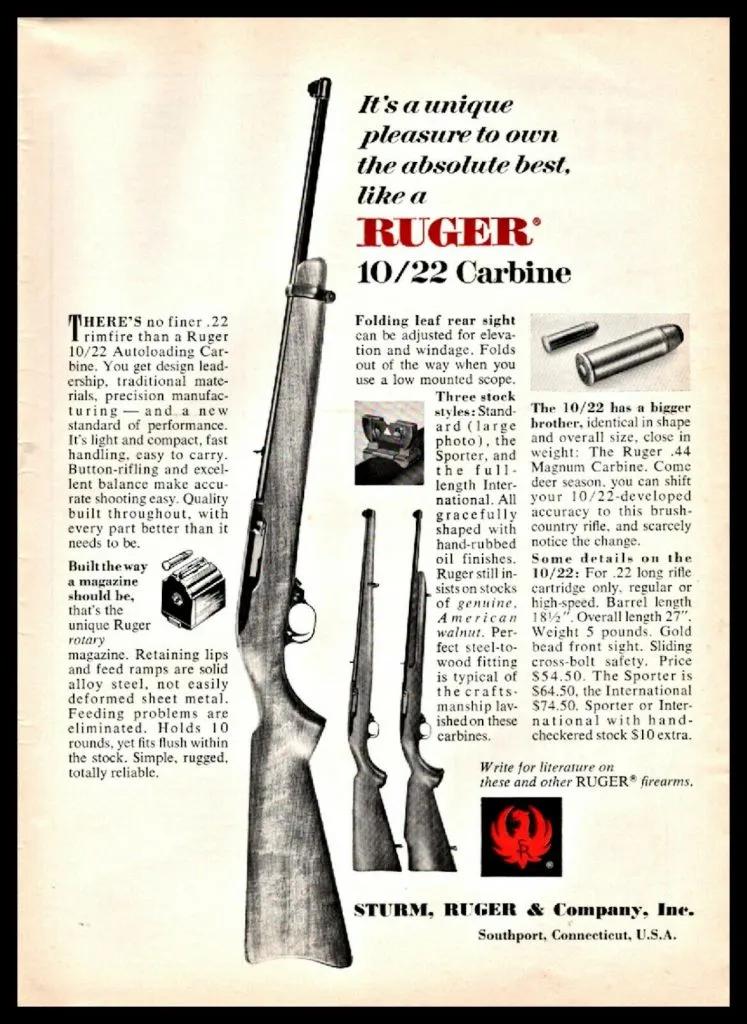
The 10/22 is one of the most popular semi auto rimfire rifles on the market today among both beginners and experienced shooters. And honestly? It’s practically the gold standard.
While in every way a mass produced rimfire rifle, the 10/22 — in all its various forms — is a great gun at an approachable price point.
And since it’s chambered in .22LR, the ammo is incredibly affordable too. You can shoot all day for less than $20. Plus it’s incredibly easy to shoot, with almost no recoil whatsoever and a noise level that’s easy on the ears, making it a favorite with seasoned shooters and youth shooters alike.
For practical purposes, the 10/22 is great for hunting small game and varmints. You can use it for anything from squirrel hunting, for rabbits on up to foxes and coyotes.
But with so many different versions to choose from, there are versions for plenty of other uses too, from fun to competition.
Then there’s the extensive aftermarket support, making the 10/22 one of the most customizable firearms around. It’s hard to top the 10/22 when it comes to third-party upgrades. It’s easy to find replacements for any part of your 10/22 so you can turn it into exactly the rifle you want.
Overall, the 10/22 platform is versatile and fun to shoot, while also being a great value.
Of course, the 10/22 is only one of many rimfire rifles. Let’s talk about how it stacks up when compared with a couple of other firearms, which happen to be its main competitors.
Ruger 10/22 vs…
Winchester Wildcat

Our first point of comparison is the Winchester Wildcat.
The Ruger 10/22 is known for its incredibly affordable price point, but the Wildcat actually has it beat for price, with an MSRP of $269 for the base model and $289 for the SR (Suppressor Ready, so threaded) model. Realistically, they actually sell for a good bit less.
The Wildcat uses rotary magazines, just like the 10/22. And I do mean “just like the 10/22.” The Wildcat is actually totally compatible with 10/22 magazines and runs them pretty much perfectly. However, you don’t get last bolt hold open unless you use Wildcat magazines.
Likewise, the Wildcat has a 10/22 style mag release. But you can also eject the magazine via those flashy red panels with the serrations. Just pull them back and the magazine ejects.
Other features include the integral Picatinny rails (one on top and another short one underneath for a bipod), button-rifled chromoly steel barrel, and the ghost ring rear sight with a ramped post front sight. It also features simple, three-step disassembly.
The Wildcat has two prime disadvantages compared to the 10/22.
First, it doesn’t come in nearly as many versions as the 10/22. While the Wildcat is a major competitor for the 10/22 Carbine and even the Takedown, it’s no match for some of the higher-end 10/22 models, certainly not right out of the box. Which brings me to the second major disadvantage, aftermarket support.
It’s not Winchester’s fault really. With the AR-15 as a notable exception, virtually no rifle matches the 10/22 for aftermarket upgrades, the Wildcat included. For those who want a truly custom build, that’s a huge downside for the Wildcat.
Ultimately, though, I think both the 10/22 and the Winchester Wildcat are excellent rifles and it mostly just comes down to personal preference. If you’re not sold on the 10/22, the Wildcat is definitely worth taking a look at.
Savage A22
Next is the Savage A22.
If you laid an A22 and a 10/22 side by side, the first thing you’d notice is that the A22 is a lot bigger. It’s still not exactly a massive rifle, but with a 21-inch barrel and 40.50-inch overall length, it’s certainly larger than the 10/22.
If you picked the rifles up, you’d notice that the A22 is, as you’d probably expect, also significantly heavier. It weighs in at 5.6 pounds, more than a pound heavier than the synthetic stock 10/22 Carbine. It does come out of the box with swivel studs built-in, though, so adding a sling to help manage the weight is easy.
Besides, that extra weight comes, at least in part, from the A22’s significantly longer barrel. That longer barrel, alongside the AccuTrigger, helps a ton with accuracy, giving much tighter groupings compared to the 10/22 or Wildcat.
Aesthetics are subjective, but in my opinion, even for a black synthetic stocked rifle, the A22 is plain. On the other handle, not every rifle needs to be built for looks and the grooved, texture pistol grip and forearm do help significantly with grip.
Aside from weight and looks, the downsides of the A22 are the same as those of the Wildcat. You just don’t get the diversity of choices or diversity of aftermarket support with the A22 that you get with the 10/22.
The A22 has a $309 MSRP, which is significantly less than the 10/22 Carbine.
Once again, I think the Savage A22 vs the Ruger 10/22 comes down to preference. If you’re more concerned about keeping the weight down or customizing your rifle, the 10/22 is the way to go. If you’re trying to get a rifle that’s as precise as possible without breaking the bank, the A22 is an excellent choice.
Types of Ruger 10/22 Models
The Ruger 10/22 comes in eight different types.
If you exclude limited distributor exclusive models, several of these types, including the Takedown Lite and 10/22 Compact, only include a single model, which would be the one listed above. For those, we’ll just do a quick refresher on what makes that rifle different.
Others, like the 10/22 Carbine and Takedown, come in a bunch of different models. For those, we’ll talk about what unifies the models across that category.
No matter how many models are available, though, here’s the rundown of each of those types:
Carbine

The 10/22 Carbine model is kind of the base model. I probably wouldn’t call it the best Ruger 10/22, but I’d definitely call it the most iconic, and popular with adult and youth shooters.
The primary differences between the various Carbine models are cosmetic, though some do also come with Weaver rails and/or scopes (and along with the scopes, scope mounts).
10/22 Carbine models come with all the class 10/22 features like the V-block system, rotary magazine, folding rear sight, and breechblock decelerator, plus a classic design and 18.5” barrel, without a lot of extra bells and whistles.
Takedown
10/22 Takedown models allow you to quickly and easily separate the action and the barrel for easy storage and transportation. All you have to do is lock the bolt back, push the takedown lever, then twist and pull. They also come with a carry case in which you can stow the two pieces.
Aside from this, most Takedown models are pretty similar to the Carbine models except that they only come with synthetic stocks and are available in a few different barrel lengths. The durability and compact storage of Takedown models make them great survival rifles.
Takedown Lite
The main difference between the Takedown Lite and most Takedown models is that the Takedown Lite incorporates the Ruger Modular Stock System and is compatible with Ruger’s Silent-SR suppressor.
There is a Takedown that has both of those features too, the Takedown Model 11112. However, thanks to the aluminum sleeve around the barrel, the Takedown Lite still weighs about 12.8 ounces less than the Model 11112.
Target
The 10/22 Target model is the line’s basic precision rifle and is a good entry point for people who want a competition rifle but can’t justify the cost of the 10/22 Competition.It has an adjustable length of pull stock with a thumbhole and an upgraded trigger, the BX-Trigger, as well as a 16.13” barrel.
Compact
Ruger’s 10/22 Compact model isn’t particularly lightweight. Instead, “compact” refers to the overall length. The 10/22 Compact has a 16.12” barrel, but also features the Ruger Modular Stock System. It has a shorter LOP than other 10/22s, just 12.5 inches, so it’s good for shooters with small builds and other shooters who find the LOP on other 10/22 models to be too long.
Tactical
The 10/22 Carbine model is kind of the base model. I probably wouldn’t call it the best Ruger 10/22, but I’d definitely call it the most iconic, and popular with adult and youth shooters.
The primary differences between the various Carbine models are cosmetic, though some do also come with Weaver rails and/or scopes (and along with the scopes, scope mounts).
10/22 Carbine models come with all the class 10/22 features like the V-block system, rotary magazine, folding rear sight, and breechblock decelerator, plus a classic design and 18.5” barrel, without a lot of extra bells and whistles.
Sporter
The 10/22 Sporter has classic styling like the Carbine, with an 18.5-inch barrel and gold bead sights. However, the Sporter elevates that to look more like a traditional hunting rifle, with an American walnut stock, a flat butt plate, and checkering on the handguard and grip.
Competition
Finally, the 10/22 Competition is the highest-end rifle on the 10/22 line and comes out of the box ready for competition.
These rifles are more costly, but for your money, you get high-end features like a dual bedding system, a heat-treated and nitrided CNC-machine match bolt, and a match bolt release.
The cold hammer-forged bull barrel is threaded for a muzzle device and fluted to reduce heat and weight.
Meanwhile, the CNC-machined, hard-coat anodized receiver is topped with a 30 MOA Picatinny rail to allow you to add your competition optic. The receiver also has a rear cleaning port and a top barrel locater that accommodates a free-floating barrel.
Unique Ruger 10/22 Features
Alright, we’ve covered all the things that make the various models of the 10/22 a distinct and customizable firearm. But what do they have in common? What makes a 10/22, regardless of variant, the same?
Well, there are a few things that more or less unite all 10/22s.
The three main ones are the barrel block, rotary magazine, and breechblock decelerator. Let’s break down each of those one at a time.
Barrel Block
The 10/22’s barrel block not only unifies 10/22s, it also makes them stand out from other .22 rifles. The 10/22 features a V-block mounting system with a pair of screws. This allows even the average user with no gunsmithing experience to easily attach and detach the barrel, making swapping the 10/22’s barrel incredibly easy.That’s not why Ruger adopted this system (they found it made manufacturing easier), but it still opened the door for the 10/22’s reputation for customizability.
Rotary Magazine
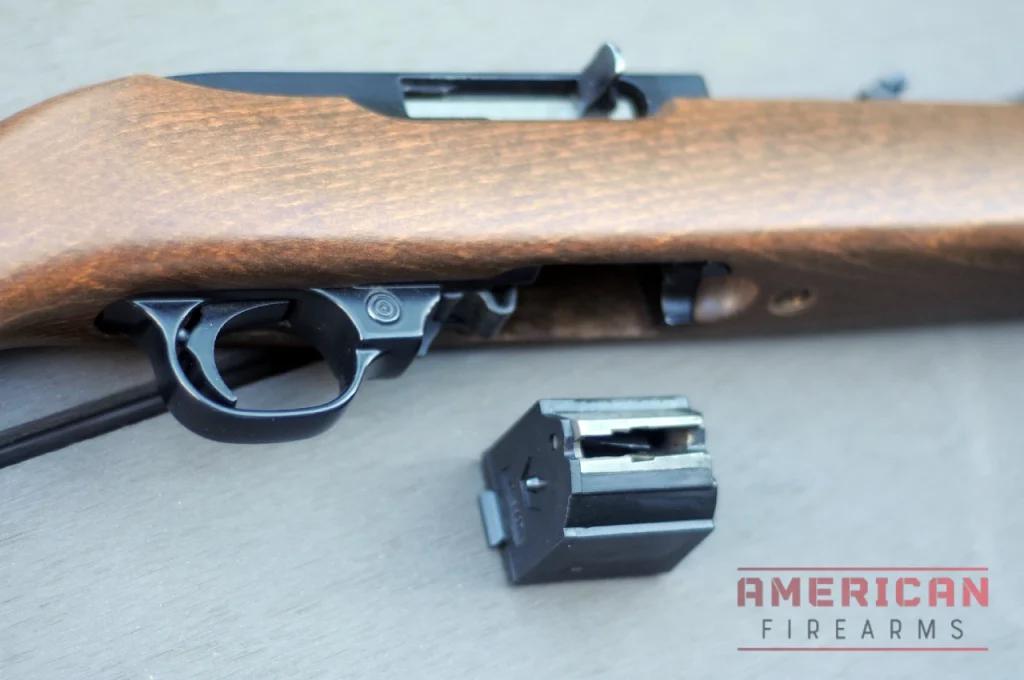
Obviously, the 10/22 is far from the only .22 rifle to use rotary magazines. Hell, it’s not even the only rifle to use 10/22 magazines. But it did introduce the concept.
Before the 10/22, .22 rifles all used box magazines, which were far less reliable magazines and were more difficult to load. That’s true for even many modern box magazines.
Rotary magazines, on the other hand, feed much more reliably and they’re much easier to load and reload. Thank god.
Breechblock Decelerator
The last main stand-out feature of the Ruger 10/22 is its breechblock decelerator.
When the 10/22 was first conceived, a common problem that semi-auto firearm manufacturers were facing was the timing of the bolt and magazine cycles.
Bolt cycles often went too fast, so there wasn’t enough time for the magazine cycle to move the next round into place for the bolt.
To solve this problem, designers at Ruger added a cam action, which slowed the breechblock’s backward motion. This design required no extra parts, keeping the 10/22 simple while also improving the rifle’s reliability.
Other Features
While the barrel block, rotary magazine, and breechblock decelerator helped the 10/22 stand out from other rifles, especially at the time of the rifle’s creation, there are a few other things that 10/22s tend to have in common with each other, regardless of model:
- A cold hammer-forged barrel,
- A simple, prominent mag release under the receiver,
- A push-button, cross-bolt manual safety,
- A polymer trigger housing that is glass-filled and heat-stabilized for durability and accuracy, and
- A combined receiver and stock for a classic shape, even on 10/22s with more modern styling.
Most also come with a combination scope base adapter that works with both .22 tip-off and Weaver scope mounts.
Accessories & Upgrades
Beyond the features of the rifle itself, the availability of aftermarket upgrades is the best thing about the 10/22. It’s much like the AR-15 in that it’s easy to build a custom 10/22 from the ground up, using only aftermarket parts.
With that said, there are a few that I particularly recommend.
For one, I love the Volquartsen bolt release. For everything the 10/22 has going for it, the bolt release is not great. This bolt release fixes that, making the rifle’s bolt release much faster and easier to operate.
For stock upgrades, I like the Magpul Hunter X-22 stock. This stock is durable and ergonomic, plus it has multiple sling mount points and adds M-LOK slots for attaching accessories.
For magazines, I actually recommend going with OEM parts. Aftermarket magazines just don’t seem to have the reliable feeding that mags made by Ruger do. Fortunately, Ruger makes 10/22 magazines in a few different sizes, so you can expand beyond the 10-round magazines that come with the rifles. I like the BX-25 to maximize the time between reloads.
On a related note, while the 10/22’s factory magazine release is pretty good, if you’re competing or just prefer an easier option, you may want an extended mag release. There are several good options out there, including the Crossfire T3 Magazine Release, Volquartsen Extended Magazine Release, and Tactical Solutions Extended Magazine Release.
Finally, there are a couple of directions I recommend for trigger upgrades. If you’re looking for a budget-friendly option, the Ruger BX Trigger is a great option. If you’re looking for a more high-end trigger, the Volquartsen TG2000 Trigger Group is an excellent drop-in trigger.
There is, of course, a world of add-ons beyond the above — from barrel accessories to iron sights and different approaches to the box magazine.
Shortcomings
The only disadvantage of the 10/22 is that there aren’t more versions.
Okay, I’m kidding, but seriously, I do wish that the 10/22 came in more calibers than just, you know, .22.
As is, the 10/22 is only really good for plinking and very small game hunting (and, depending on the model, competition). Despite the name, the Tactical really isn’t all that great for self-defense due to the low power of .22LR. If the rifle were available in more powerful calibers, it would really open up the possible applications for the rifle platform.
On the other hand, there are already so many versions of the 10/22 that most manufacturers only stock a handful of models at most. That means that while it’s easy to track down a 10/22, if there’s a particular model you want, it can be much harder.
Finally, those fancy 10/22 rotary magazines are nice, but if you want to get more of them, they’re not cheap, at least not relative to other .22LR magazines. At least .22LR is cheap, so you can put aside your ammo savings to pay for something to put that ammo in.
Price Ranges vs. Features
Under-$400: This is the entry-level for the 10/22, the home of rifles with basic components and construction. These rifles are suitable for casual shooters and beginners, but may not be suitable for more advanced shooters or demanding shooting conditions, so you’ll find a basic Carbine or Compact model.
$400-600: A step up, but still relatively simple. The Takedown, Tactical, and Sporter are all in this range. These rifles are suitable for a wider range of shooters and shooting conditions, and are a good option for those looking for a reliable and durable rifle that can handle more demanding conditions.
$600-900: This will get you the Target or a couple of the higher-end Takedown configs, including the Takedown Lite. These rifles are designed for serious shooters and demanding shooting conditions, and offer the best in performance, durability, and accuracy.
$900+: Here you get those high-end, match-grade features found in the 10/22 Competition.
So, what are you waiting for?
The 10/22 is an awesome rifle that gives rimfire fans a diverse platform with lots of good options, so I was pretty spoiled for choice. To give you a good cross-section of the different 10/22 options available, I chose one model from each of the less popular 10/22 types, and two from the more populated Carbine and Takedown categories.
I was also careful to choose a diverse array of models to give you a better idea of the different features that can be found on the 10/22 platform. Whichever 10/22 you pick, you can be certain it will be reliable and exemplifies fun shooting.
Sign up for our newsletter
Get discounts from top brands and our latest reviews!







